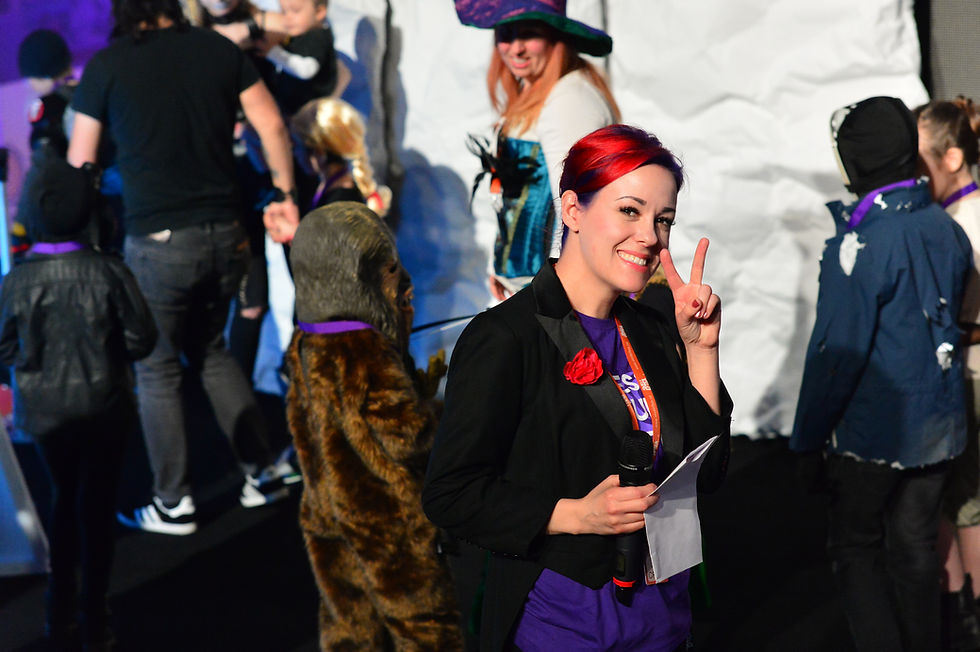The beauty of limitations: Wanderword and the storytelling opportunities of audio gaming
- The Goose

- Mar 9, 2021
- 3 min read
Updated: Aug 24, 2022
It’s tempting to claim games like Cursed Painting represent an emerging niche in the industry. This interactive role-playing game draws on gameplay mechanics similar to Dungeons and Dragons, but it's played via the Alexa app. That means it’s audio-only.
Wanderword, the game’s creator, calls this and the other titles in its portfolio interactive audio entertainment.
But as Wanderword’s Lead Designer Henrik Lindfors will tell you, audio is central to every standout gaming experience, even if it’s not what players think of when engaging in the gameworlds they love. “As a user, you convey your actions in the game either through a mouse, keyboard, or controller - that’s one mode of input,” Henrik explains. “But as far as output, you have the graphical aspect and the audio - two modes of output.”
The challenge for the Wanderword team is not simply top sound design. That should be a priority for every studio. Instead, Henrik and his team must use sound to “portray the graphical aspects of the experience with sound.”
Henrik spoke about the company’s design approach on 12 March as part of Friday Stories. We caught up with him beforehand to find out how he became involved with Wanderword and why he thinks there’s no one standing in their way.
Timing is everything
After 12 years working in radio, Henrik shifted to the games industry when “unheard of” investment was made in Boden’s future as a games hub. After an internship with “a weird little company from Seattle that dabbled in interactive audio entertainment,” Henrik found firm footing in the industry with Wanderword. Unsurprisingly, his background in radio meant Henrik understood the company’s mission to design audio-based games, and he started his ascent from intern to Lead Designer.
In 2021, the company expects significant growth following the success of Cursed Painting and other very different games. This success has reinforced Henrik’s belief that too many studios - and aspiring students - get sound design wrong.
“What I see is that audio is rarely given priority,” he explains. “You see that in small indie studios, and you see it in student projects, too. Basically, they wait until the last minute to consider audio, and it’s not a good decision.”
According to Henrik, the studio leading the way with exceptional sound design is DICE and their first-person shooter franchise, Battlefield. The secret to their success? Incorporating sound design at the earliest possible moment in the production pipeline. Describing the “poetic” handling of audio details in these games, Henrik highlights the sound design’s precision as one reason Battlefield’s most complex scenes “work flawlessly”. “It’s a totally different audio soundscape,” he offers, “And it drives the whole experience home.” And that precision in no accident. Henrik explains:
“DICE is the best in the business because they don’t wait until the last minute to work the audio into the production pipeline. It’s there from the beginning… I wish more developers took that approach of including audio design early in the process.
A new path
During his appearance at Friday Stories, Henrik emphasized that a successful production pipeline prioritizes sound design alongside the visual elements. This hit home for the professionals and students in the audience who might not have considered the vital importance of a game’s second - and equally important - mode of output.
To make sure aspiring designers and developers at Friday Stories understood the complexities, Henrik sketched some of the guiding principles used by his team to design sound for moving characters, what he calls animating with sound. “It’s about what we can show with sound effects because audio is our visual means,” he explains, “and how audio elements work in combination with each other”.
Naturally, this will open up new pathways for students drawn to this design discipline. For some, it will introduce a new professional route into Sweden’s games studios. For others, Henrik’s insights will spark new ideas about what storytelling in games can look like - or rather, sound like - and they’ll join Wanderword in making waves in the country’s thriving industry.
This is an exciting development for Sweden’s games community, according to Henrik. It’s a way for the industry to grow without introducing competition. Audio gaming is “in a different space”. He explains:
“I’m convinced that one of the biggest ingredients to the Swedish success story is that we don’t kick each other over like we would in a competitive environment. Where we do compete is for the user’s time, but I don’t see that interactive audio entertainment is a threat. We have use cases where you play our games in the car or doing the dishes - you’re not going to be playing console games there.”




Comments